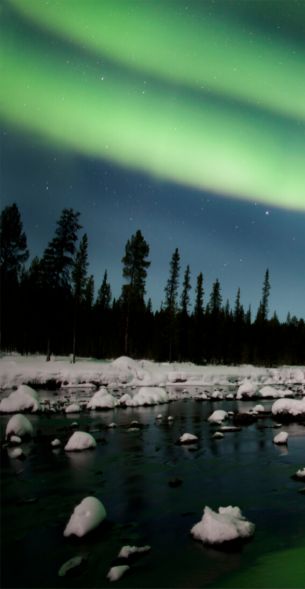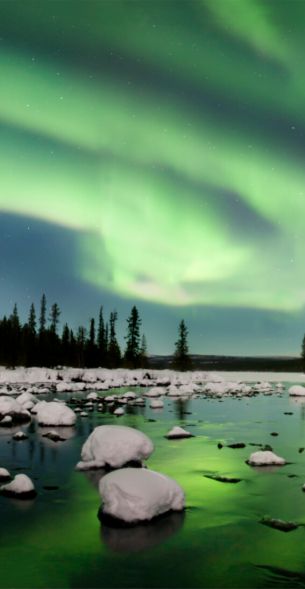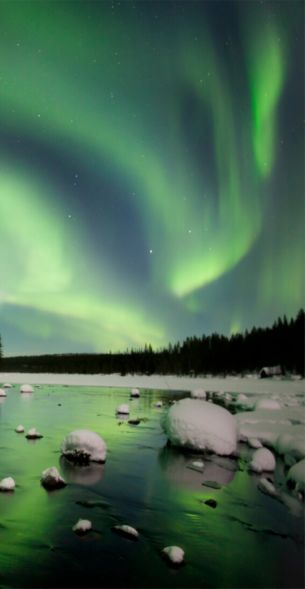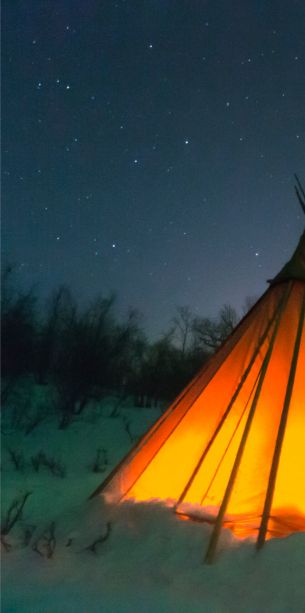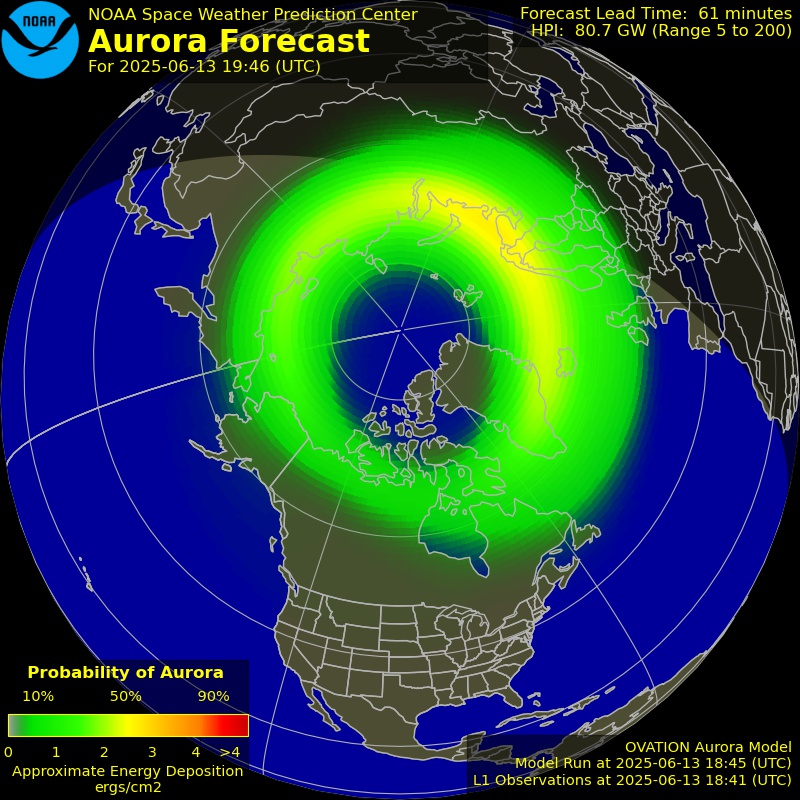What is the northern lights?
Aurora live – northern lights forecast!
How to photograph the northern lights.
What is Aurora Borealis? | Learn More |
Abisko is often mentioned as the best place on Earth to see the aurora. Why is that? | Learn More |
Measurements that help us to predict the Aurora borealis | Learn More |
How to photograph the northern lights | Learn More |
Get inspired and see Peter Rosén´s northern light images | SEE MORE |
What Causes the Northern Lights? A Simple Explanation
Look up at the sky on a clear, starry night. It feels as if the atmosphere that gives us blue skies during the day has pulled back, revealing the vast universe above.
When you see the Aurora Borealis, you’re actually witnessing the normally invisible night-time atmosphere come to life — beautifully lit up by natural energy from space.
To truly understand how the Northern Lights are formed, we need to begin a journey into space — all the way to the sun. This is where the story begins.
The sun constantly releases a stream of high-energy particles, known as the solar wind. Sometimes, the number of particles increases dramatically during what we call solar storms.
The second part of this amazing phenomenon happens right here on Earth. Our planet has an atmosphere filled with particles like nitrogen and oxygen, and it’s surrounded by a protective magnetic field — the magnetosphere — created by Earth’s iron core.
The Earth’s magnetic field has a north and south pole, and forms invisible magnetic lines that curve down in oval shapes around both poles. When the charged particles from the sun reach Earth, many are caught by these magnetic lines and directed toward the polar regions.
As these particles travel downward, they collide with particles in our atmosphere. This collision transfers energy, and that energy is released as light. The result is the magical, glowing dance of the northern lights.
How to Get a Reliable Northern Lights Forecast – Tips from Lapland
Want to see the Northern Lights? To get an accurate aurora forecast, you can use real-time data from sources like NASA and the Swedish Institute of Space Physics. In Lapland, the aurora borealis has been observed and studied for over a century — through scientific expeditions, advanced instruments, and international research collaborations.
Today, a global network of scientific instruments, both in space and on Earth, monitors auroral activity 24/7. This network provides valuable insights into when, where, and how strong the auroras will appear.
In this guide, we’ll help you understand how to interpret aurora data yourself — so you can predict your own northern lights experience and gain a deeper understanding of this breathtaking natural phenomenon that lights up the skies over Lapland.
The celestial view of the aurora action
The satellite collects data on energy levels in the atmosphere. It provides an estimate of the location, extent and intensity of aurora on a global basis and can be good to use for a good northern lights forecast.
It is updated every 10 minutes, giving you a guide to the possibility of seeing aurora at a given location at the time of the most recent satellite pass.
The greater the power flux recorded by the satellite (0 to 10 erg/cm2/s), the redder the auroral oval, and thus the greater the likelihood of seeing aurora. Worth noting is the n-factor, to the left of the image, which tells you how accurate the image is.
This is based on the satellite performance at the time, i.e. the amount of data collected. The lower the value, preferably far below 2.0, the more accurate the image.
The red arrow points to the noon meridian. Wait for the update and see how the oval shifts!
Do you want to experience and photograph the northern lights?
Join photographer Peter Rosén on his 5-8 day all inclusive tours in Swedish Lapland. All previous participants have seen and photographed the northern lights on these tours since we started in 2012 (c. 90 groups). Get to know Peter through the film above made by Swedish Lapland Tourist Board.
Northern lights forecast the Earth’s magnetosphere
When high-energy particles travel into the atmosphere along the magnetic field lines, the activity rises, thus resulting in aurora. So, a rise, or peaks, in the magnetogram means there is something going on in the atmosphere in the region around Kiruna and hopefully elsewere on the northern hemisphere!
The K-index quantifies disturbances in the Earth’s magnetic field with an integer in the range 0–9 with 1 being calm and 5 or more indicating a geomagnetic storm. An index of 1-3 can be enough for a good aurora around Kiruna or northernmost Scandinavia. If you are further south you will need a higher index.
How do you then use these to hunt for the aurora?
Next, how much activity is there? How “red” is the oval?
After that, look at the raw data from Kiruna.
Is there anything being recorded by the instruments here?
And when everything says there is a show on the way – get out to see the it live!
If the local K-index is 2 or higher in Kiruna or Abisko you do have a good northern lights forecast and good chance for a great show. If you are on lower latitude you will need a higher index to see the Aurora in a good way.
Hopefully your prediction has set you centre stage and just in time for a beautiful performance.
Good luck!

How to photograph the northern lights
If you do not have a tripod, place your camera on the ground or anything else steady, direct the lens towards the aurora and take the picture.
If your camera has settings for exposure times, allow for as long exposure as possible, 10 – 30 seconds is usually enough.
If you have a little more experience and your camera allows for manual settings, try the following tips to capture your aurora image in the best possible way.
Before you set out
- Make sure you start with fully-charged batteries since they quickly run down out in the cold.
- Choose a camera with a wide-angle lens and place it steady, preferably on a tripod. A compact camera will work well, but a digital SLR camera will enable better images. Since all the adjustments are done in the dark, it is a good idea to become well-acquainted with your camera and perhaps read through the instruction book one last time before you set out.
- Take a head lamp with you. The light is convenient when adjusting your camera settings, but also very useful for lighting up a nice foreground. For example it could be nice to light up a person or something else in the image. A flash unfortunately gives an unnatural lighting and can spoil the atmosphere you want to convey in the image.
Out under the aurora
- Set your camera to ISO 800 or higher. With the newer cameras you can set the ISO higher without too much noise in the image. Open the aperture as wide as possible, between f2.0 and 4.0. A wide-open aperture allows for more light to reach the sensor per second.
- If you do not have a foreground, set the focus to infinity to make the stars sharp. With a wide-angel lens you can focus on an object ten meters away and still capture both beautifully sharp aurora and a star-studded sky.
- The exposure time varies depending on your ISO and aperture settings as well as how strong the aurora is. A simple tip is to take a picture, evaluate it on the LCD screen or histogram and make adjustments from there. If the image appears too dark, increase the exposure time. It can be anywhere between 5 – 60 seconds.
- When you are done photographing, place your camera in an airtight bag before taking it inside. Otherwise you risk condensation in the camera. Let the camera warm up inside the bag before taking in out in room temperature.
Why Abisko Is One of the Best Places to See the Northern Lights
Abisko’s special location, landscape, and history all help make it one of the best places in the world to see the Northern Lights.
First of all, the auroral oval — the zone where the aurora usually appears — often passes right over Abisko. This means there’s a high chance of seeing the aurora here.
Secondly, the mountains to the west of Abisko play an important role. As moist air moves in from the Atlantic, it hits the mountains and rises. Most of the rain and snow falls on the mountain slopes before the air reaches Abisko. As a result, the skies here are often clear — even in winter.
Abisko also has a rich cultural and scientific history. In the early 1900s, mining investments led to the construction of a railroad to transport iron ore from nearby Kiruna to the port of Narvik in Norway.
With the railway came scientists and curious travelers, all drawn to the area’s unique subarctic wilderness and the mystery of the Aurora Borealis.
For over 100 years, people from around the world have come to Abisko for research, adventure, and inspiration. The stunning Abisko National Park, combined with clear skies and the magic of the northern lights, makes this a place like no other.
Welcome to Abisko — an experience you won’t find anywhere else!
